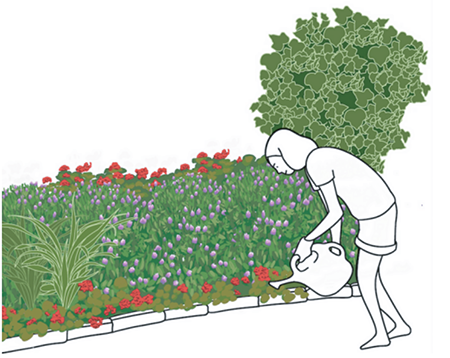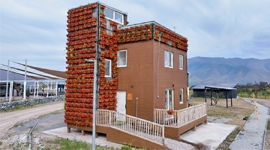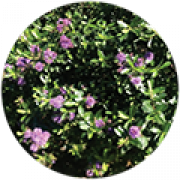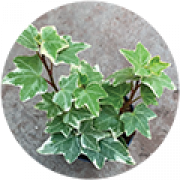You are here
Water your garden with gray water to help take care of the planet!

Revista Cambalache is a scientific and technological publication for children and young adults published by the Universidad de Santiago de Chile since 2020. The May 2024 issue includes an article on gray water reuse written by the GWR Project research group. The main parts of the article are reproduced below.
Water is essential to our lives.
Our bodies are composed of approximately 60% water, and we could not survive more than three to five days without it. This is why water is considered a vital compound. Much of our planet is covered in water, which regulates the climate and seasons on a global scale. Water is also essential for basic societal activities, such as agriculture, livestock farming, and industry.
"In 2023, the world's population reached approximately eight billion people, which presents an unprecedented challenge regarding access to water as a vital resource."
Chile is one of the countries most affected by the climate crisis. Along with other factors, it has caused accelerated glacier melting, changes in the temperature and composition of bodies of water, such as rivers, lakes, and oceans, and other phenomena.
These changes have disrupted the natural water cycle, which flows from high mountains to the ocean through rivers and underground streams. As a result, less water is available for human activities.
How can we combat the water crisis through gray water reuse?
Domestic wastewater is the water we dispose of in our homes. It is carried through the sewer system to treatment plants before being returned to nature. This process removes most of the waste incorporated into the water during its use.
In our country, this water is disposed of together through the sewer system, but it can be classified into two types: gray water and black water.
Gray water comes from washing utensils and clothes, as well as from showers. Greywater differs from blackwater, or sewage, in that the latter contains excrement and large amounts of organic matter and bacteria.
"Approximately 65% of household wastewater is gray water."
Due to the climate crisis and its consequences, there has been a growing interest in segregating, treating, and reusing gray water. This practice allows us to take advantage of this resource without increasing our consumption of fresh water. Currently, various alternatives are being analyzed for its reuse in toilet flushing, patio washing, and other non-consumptive uses.
However, this service is not yet available in homes or cities.
Technologies for Reuse
Among the proposed ideas, the GWR Project suggests treating gray water from homes to water gardens, including green roofs and walls (more information here: bit.ly/3KfjWvs). Green roofs and walls are essentially plant coverings installed on roofs or walls.
They retain rainwater, purify the air, lower ambient temperatures, regulate indoor climate control, promote urban biodiversity, and improve the thermal efficiency of homes, saving energy for heating in the winter and cooling in the summer
What can you do?
At home, you can identify which graywater you can collect for watering your garden plants. For example, you can collect water from the rinse cycle of your washing machine or from rinsing dishes. But be careful! Before you start, check which plants can be watered with greywater.
Image: Cambalache
Plants such as ribbon plants, white ivy, cardinal flowers, and veronica can be watered with gray water.
A growing number of people are modifying their water disposal systems to collect gray water directly from their homes. They use gravel or commercial filters to treat the water before using it to water their plants. This practice will become increasingly common.
Plants that can be watered with gray water:
The spider plant (Chlorophytum comosum), which is native to South Africa, is often used indoors, but it also adapts well to outdoor environments. It only needs partial shade.
It requires minimal watering, is highly resilient, and can tolerate sub-zero temperatures. Due to its rapid propagation, it is ideal for use as ground cover.
It is popularly known as Cardenal (Pelargonium hortorum). This plant is hardy and requires no special care. It can withstand virtually all weather conditions, although severe frosts can cause severe damage. It blooms in the spring and summer and retains its flowers until autumn. It consumes very little water. Simply water it when the soil is dry to keep it in good condition.
The Veronica (Hebe buxifolia) is a medium-sized, evergreen shrub that can grow up to two meters tall. Originally from New Zealand, it has adapted very well to our country. Its beautiful, spike-shaped flowers with lilac tones appear in the summer and fall.
It does not require frequent watering; in fact, it is sensitive to waterlogging, which can cause its roots to rot. If you live on the coast, this shrub will make a great addition to your garden because it tolerates salty air very well.
White ivy (Hedera helix variegata) can spread as ground cover or climb with adequate support. It initially reaches a height of 30 centimeters, and with support, it can grow several meters high. It is frost-resistant and should be grown in full sun or partial shade.
Its water requirements are moderate. In summer, water it every two days. In winter, water it only when the soil is dry.
The complete edition of Revista Cambalache can be read at https://cambalache.usach.cl/
News
 GWR project at the Environmental Fair
GWR project at the Environmental Fair
 GWR researcher participates in major science conference in Portugal
GWR researcher participates in major science conference in Portugal
 The GWR Project has achieved the technological integration of gray...
The GWR Project has achieved the technological integration of gray...






